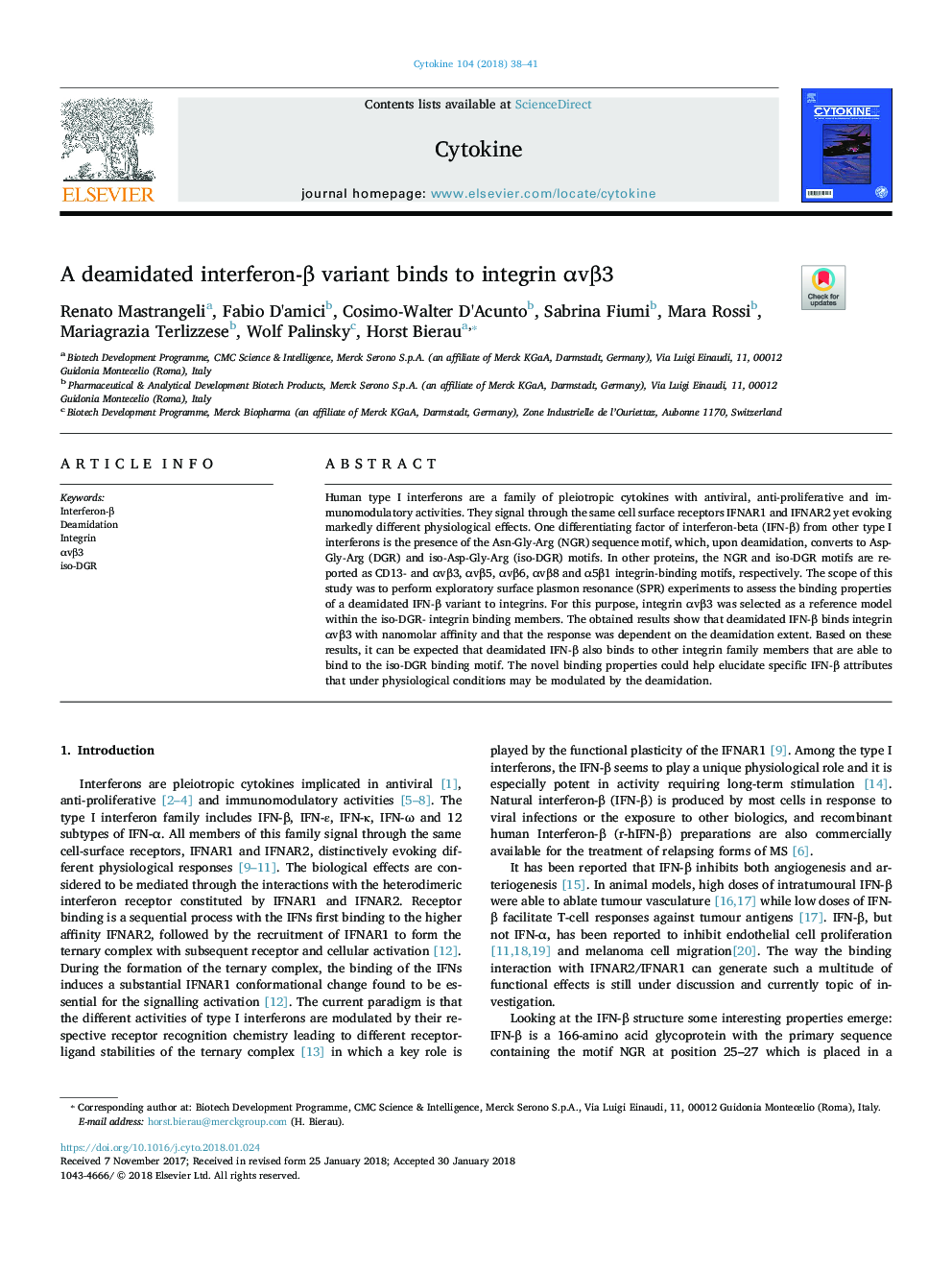| Article ID | Journal | Published Year | Pages | File Type |
|---|---|---|---|---|
| 8629077 | Cytokine | 2018 | 4 Pages |
Abstract
Human type I interferons are a family of pleiotropic cytokines with antiviral, anti-proliferative and immunomodulatory activities. They signal through the same cell surface receptors IFNAR1 and IFNAR2 yet evoking markedly different physiological effects. One differentiating factor of interferon-beta (IFN-β) from other type I interferons is the presence of the Asn-Gly-Arg (NGR) sequence motif, which, upon deamidation, converts to Asp-Gly-Arg (DGR) and iso-Asp-Gly-Arg (iso-DGR) motifs. In other proteins, the NGR and iso-DGR motifs are reported as CD13- and αvβ3, αvβ5, αvβ6, αvβ8 and α5β1 integrin-binding motifs, respectively. The scope of this study was to perform exploratory surface plasmon resonance (SPR) experiments to assess the binding properties of a deamidated IFN-β variant to integrins. For this purpose, integrin αvβ3 was selected as a reference model within the iso-DGR- integrin binding members. The obtained results show that deamidated IFN-β binds integrin αvβ3 with nanomolar affinity and that the response was dependent on the deamidation extent. Based on these results, it can be expected that deamidated IFN-β also binds to other integrin family members that are able to bind to the iso-DGR binding motif. The novel binding properties could help elucidate specific IFN-β attributes that under physiological conditions may be modulated by the deamidation.
Keywords
Related Topics
Life Sciences
Biochemistry, Genetics and Molecular Biology
Endocrinology
Authors
Renato Mastrangeli, Fabio D'amici, Cosimo-Walter D'Acunto, Sabrina Fiumi, Mara Rossi, Mariagrazia Terlizzese, Wolf Palinsky, Horst Bierau,
